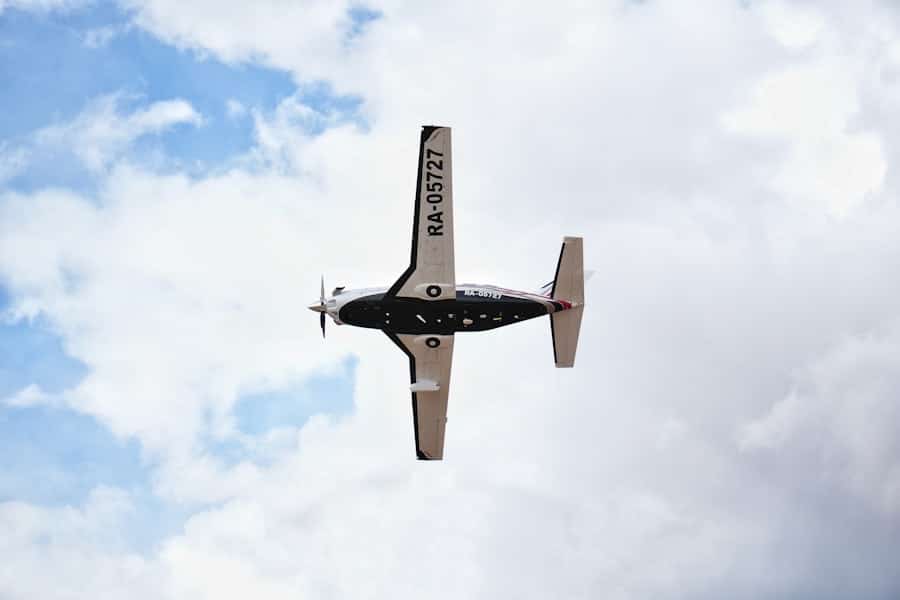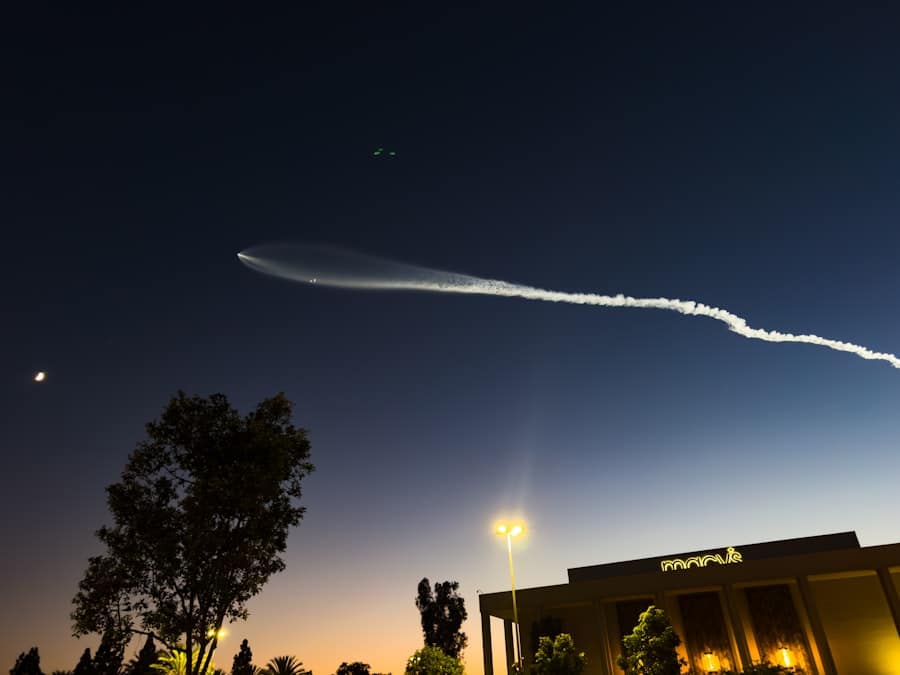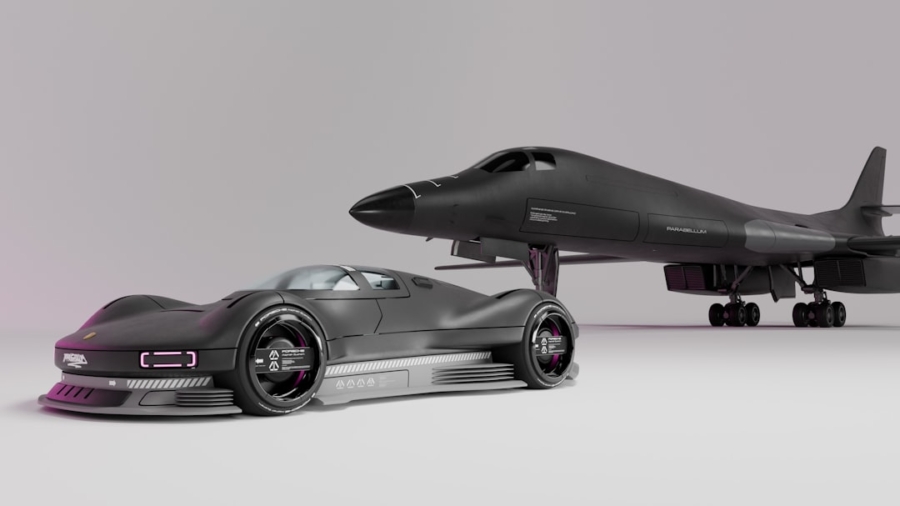Aerospace innovations have been at the forefront of technological advancement, shaping not only the way we travel but also how nations defend themselves. The field of aerospace encompasses a wide range of disciplines, including aerodynamics, materials science, propulsion, and avionics, all of which contribute to the development of more efficient and capable aircraft. Over the decades, the aerospace industry has witnessed remarkable transformations, driven by the need for enhanced performance, safety, and operational effectiveness.
From the early days of flight to the modern era of advanced military aviation, innovations in this sector have continually redefined the boundaries of what is possible. The significance of these innovations extends beyond commercial aviation; they play a crucial role in military applications as well. As geopolitical tensions rise and new threats emerge, nations are compelled to invest in cutting-edge aerospace technologies to maintain their strategic advantages.
The integration of advanced materials, sophisticated avionics, and innovative propulsion systems has led to the creation of aircraft that are not only faster and more maneuverable but also equipped with enhanced stealth capabilities. This evolution in military aviation is a direct response to the changing landscape of warfare, where speed, precision, and adaptability are paramount.
Key Takeaways
- Aerospace innovations have revolutionized military aviation, leading to advancements in aircraft technology, unmanned aerial vehicles (UAVs), artificial intelligence, and hypersonic weapons and aircraft.
- These innovations have significantly impacted military operations, enhancing capabilities, efficiency, and effectiveness in national security and defense.
- Advancements in aircraft technology have led to the development of more advanced and sophisticated military aircraft, improving speed, maneuverability, and stealth capabilities.
- Unmanned Aerial Vehicles (UAVs) play a crucial role in military operations, providing surveillance, reconnaissance, and combat support without risking human lives.
- The integration of artificial intelligence in military aircraft has the potential to enhance autonomous decision-making, mission planning, and overall operational effectiveness, shaping the future of military aviation.
Impact of Aerospace Innovations on Military Aviation
The impact of aerospace innovations on military aviation is profound and multifaceted. One of the most significant changes has been the shift towards multi-role aircraft that can perform a variety of missions, from air superiority to ground attack and reconnaissance. This versatility is largely attributed to advancements in avionics and weapon systems that allow a single platform to adapt to different combat scenarios.
For instance, the F-35 Lightning II is designed to fulfill multiple roles, including stealthy strike missions and intelligence gathering, showcasing how modern aircraft can be optimized for diverse operational requirements. Moreover, innovations in materials science have led to the development of lighter and stronger materials that enhance aircraft performance. The use of composite materials in military aircraft reduces weight while increasing durability, allowing for improved fuel efficiency and greater payload capacity.
This shift not only enhances operational range but also contributes to lower logistical costs, making military operations more sustainable over time. The introduction of stealth technology further exemplifies how aerospace innovations have transformed military aviation; aircraft like the B-2 Spirit and F-22 Raptor utilize advanced radar-absorbing materials and design features that minimize their radar cross-section, enabling them to penetrate enemy defenses with reduced risk.
Advancements in Aircraft Technology

Advancements in aircraft technology have revolutionized both military and civilian aviation, leading to significant improvements in performance, safety, and efficiency. One notable area of progress is in propulsion systems.
These engines not only reduce operational costs but also minimize environmental impact, aligning with global efforts to promote sustainability in aviation. In military applications, advanced engines provide superior thrust-to-weight ratios, enabling fighter jets to achieve remarkable speeds and agility during combat operations. Another critical advancement is in avionics systems, which have become increasingly sophisticated over the years.
Modern military aircraft are equipped with advanced radar systems that provide enhanced situational awareness and target tracking capabilities. For example, phased array radar technology allows for simultaneous tracking of multiple targets while maintaining high-resolution imaging. This capability is essential for modern air combat scenarios where quick decision-making is crucial.
Additionally, advancements in electronic warfare systems enable aircraft to detect and counter enemy radar and missile systems effectively, further enhancing their survivability on the battlefield.
Role of Unmanned Aerial Vehicles (UAVs) in Military Operations
Unmanned Aerial Vehicles (UAVs), commonly known as drones, have emerged as a transformative force in military operations. Their ability to conduct surveillance, reconnaissance, and targeted strikes without risking human lives has made them invaluable assets on the modern battlefield. UAVs like the MQ-9 Reaper are equipped with advanced sensors and weaponry that allow for precision strikes against high-value targets while minimizing collateral damage.
This capability has changed the dynamics of warfare, enabling military forces to engage adversaries with unprecedented accuracy. The operational flexibility offered by UAVs is another significant advantage. They can be deployed in a variety of environments, from urban settings to remote areas where traditional manned aircraft may face challenges.
The ability to operate at high altitudes for extended periods allows UAVs to gather intelligence over vast areas without detection. Furthermore, advancements in communication technologies have enabled real-time data transmission from UAVs to command centers, facilitating informed decision-making during critical operations. As nations continue to invest in UAV technology, their role in military strategy is expected to expand even further.
Integration of Artificial Intelligence in Military Aircraft
The integration of Artificial Intelligence (AI) into military aircraft represents a paradigm shift in how air combat is conducted. AI technologies enhance decision-making processes by analyzing vast amounts of data in real-time, allowing pilots and commanders to respond more effectively to dynamic battlefield conditions. For instance, AI algorithms can process information from various sensors onboard an aircraft, providing pilots with actionable insights regarding enemy movements or potential threats.
Moreover, AI can assist in automating certain flight operations, reducing pilot workload during complex missions. This capability is particularly beneficial in high-stress environments where quick reactions are essential for survival. AI-driven systems can also improve mission planning by simulating various scenarios and optimizing flight paths based on real-time intelligence inputs.
Development of Hypersonic Weapons and Aircraft

The development of hypersonic weapons and aircraft marks a significant leap forward in aerospace innovation with profound implications for military strategy. Hypersonic technology refers to speeds exceeding Mach 5 (five times the speed of sound), which presents unique challenges and opportunities for both offensive and defensive operations. Countries like the United States, Russia, and China are actively pursuing hypersonic capabilities as a means to enhance their deterrence strategies.
Hypersonic weapons can evade traditional missile defense systems due to their speed and maneuverability. Unlike ballistic missiles that follow predictable trajectories, hypersonic glide vehicles can change course mid-flight, making them difficult targets for interception. This capability poses a significant challenge for national defense systems worldwide, prompting nations to invest heavily in counter-hypersonic technologies.
Additionally, hypersonic aircraft could revolutionize air travel by drastically reducing flight times; however, their primary focus remains on military applications where speed and surprise are critical factors.
Importance of Aerospace Innovations for National Security
Aerospace innovations are intrinsically linked to national security as they provide countries with the tools necessary to protect their interests and maintain strategic advantages over potential adversaries. The rapid pace of technological advancement means that nations must continuously adapt their military capabilities to counter emerging threats effectively. Innovations in aerospace not only enhance offensive capabilities but also bolster defensive measures against a wide range of threats.
For instance, advancements in satellite technology have improved reconnaissance and surveillance capabilities, allowing for better monitoring of potential adversaries’ movements and intentions. This intelligence-gathering capability is crucial for informed decision-making at all levels of government and military command. Furthermore, the development of advanced missile defense systems relies heavily on aerospace innovations; these systems must be capable of detecting and intercepting a variety of aerial threats, including ballistic missiles and UAVs.
Future Implications of Aerospace Innovations for Military Aviation
Looking ahead, the future implications of aerospace innovations for military aviation are vast and complex. As technology continues to evolve at an unprecedented pace, we can expect further integration of advanced systems that enhance operational effectiveness while reducing risks to personnel. The ongoing development of autonomous systems will likely reshape the battlefield landscape; fully autonomous drones could conduct missions with minimal human oversight, raising ethical questions about warfare’s future.
Additionally, as nations invest in next-generation aircraft designed for stealth and speed, we may witness a new arms race focused on aerospace capabilities. The competition for hypersonic technology will drive innovation but also necessitate international dialogue on arms control and regulation to prevent escalation into conflict. Furthermore, as climate change becomes an increasingly pressing global issue, future aerospace innovations will need to address environmental concerns while maintaining operational readiness.
In conclusion, aerospace innovations will continue to play a pivotal role in shaping military aviation’s future landscape. The interplay between technological advancement and national security will drive research and development efforts across the globe as countries strive to maintain their strategic advantages in an ever-evolving geopolitical environment.
In the rapidly evolving field of military aviation, aerospace innovations are playing a pivotal role in transforming capabilities and strategies. A related article that delves into the technological advancements shaping the future is “New World of Possibilities with the Samsung Galaxy Chromebook 2 360.” This piece explores how cutting-edge technology, like that found in the latest Chromebooks, is influencing various sectors, including military applications. The integration of advanced computing power and connectivity in devices such as the Samsung Galaxy Chromebook 2 360 highlights the broader trend of technological convergence, which is also evident in aerospace innovations. For more insights, you can read the full article here.
FAQs
What are some examples of aerospace innovations transforming military aviation?
Some examples of aerospace innovations transforming military aviation include advanced stealth technology, hypersonic weapons, unmanned aerial vehicles (UAVs), and advanced materials and manufacturing techniques.
How is advanced stealth technology transforming military aviation?
Advanced stealth technology, such as radar-absorbing materials and shapes, is transforming military aviation by allowing aircraft to operate undetected by enemy radar systems, providing a significant tactical advantage in combat situations.
What are hypersonic weapons and how are they transforming military aviation?
Hypersonic weapons are missiles that travel at speeds greater than Mach 5, or five times the speed of sound. These weapons are transforming military aviation by providing the ability to strike targets with unprecedented speed and precision, making them extremely difficult for enemy defenses to counter.
How are unmanned aerial vehicles (UAVs) transforming military aviation?
UAVs, also known as drones, are transforming military aviation by providing the ability to conduct reconnaissance, surveillance, and strike missions without putting human pilots at risk. UAVs also offer the potential for extended endurance and loitering capabilities, making them valuable assets for military operations.
What role do advanced materials and manufacturing techniques play in transforming military aviation?
Advanced materials, such as carbon fiber composites and ceramic matrix composites, along with advanced manufacturing techniques like additive manufacturing, are transforming military aviation by enabling the development of lighter, stronger, and more efficient aircraft and components. These advancements contribute to improved performance, range, and survivability of military aircraft.

